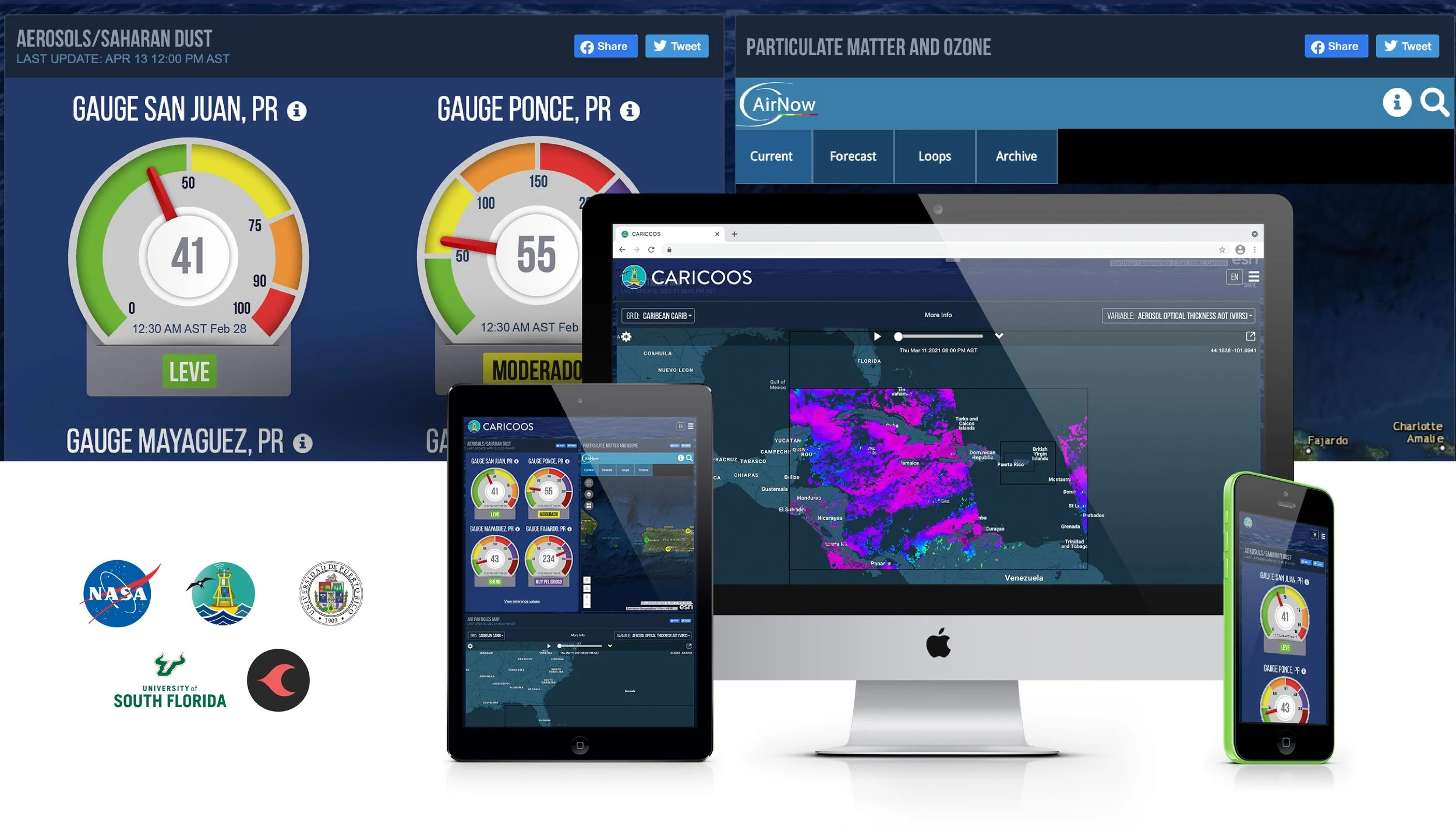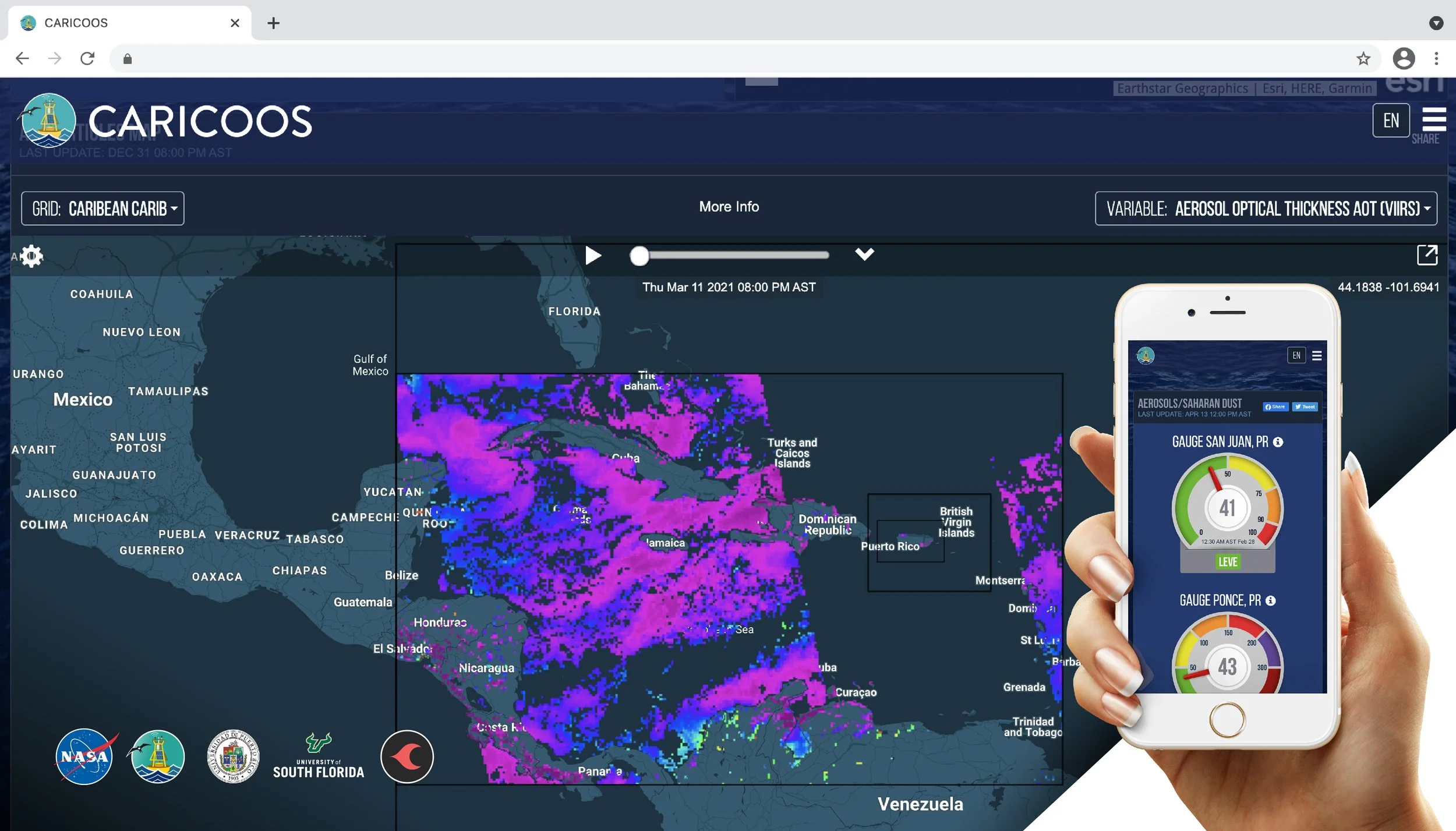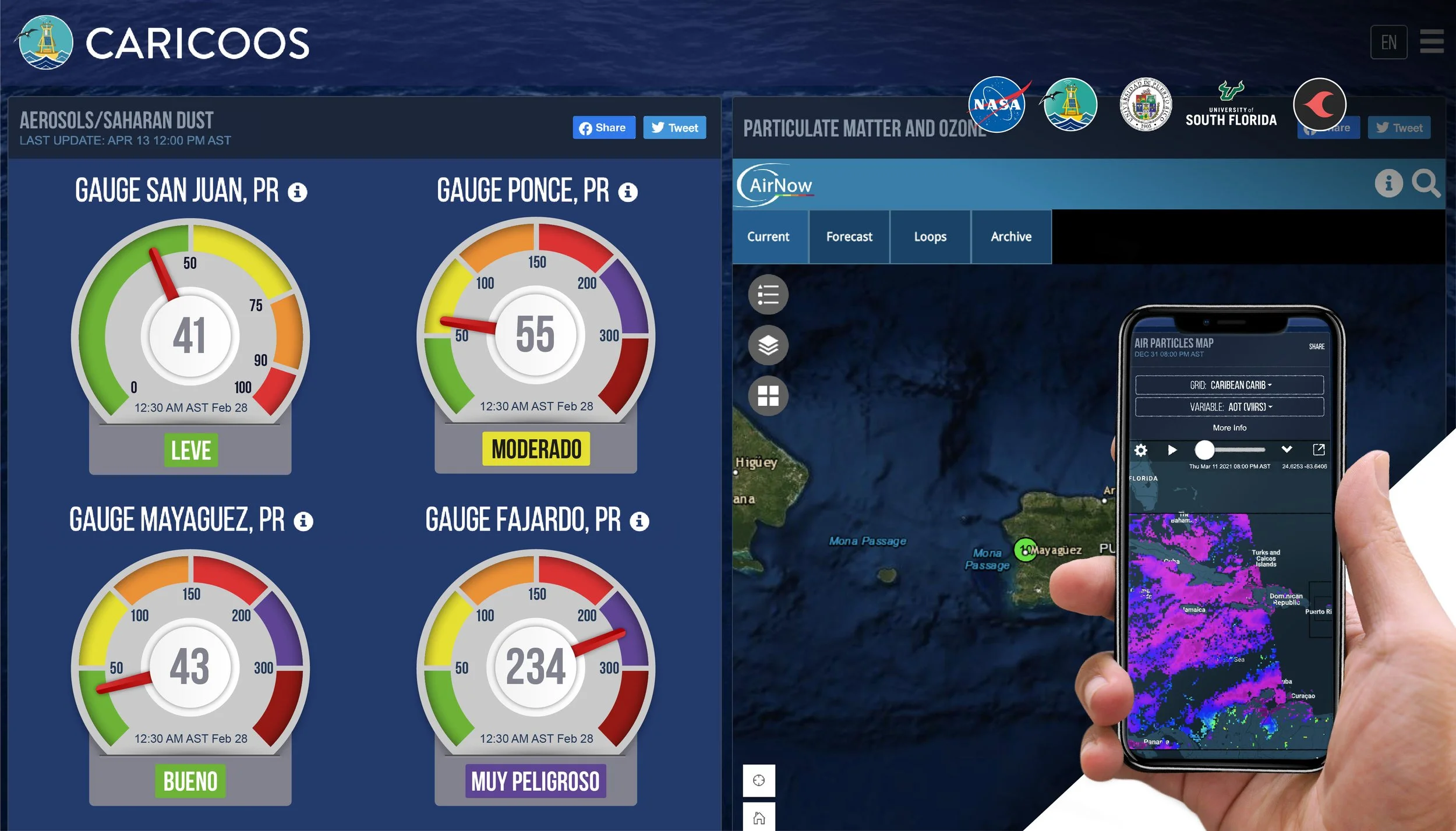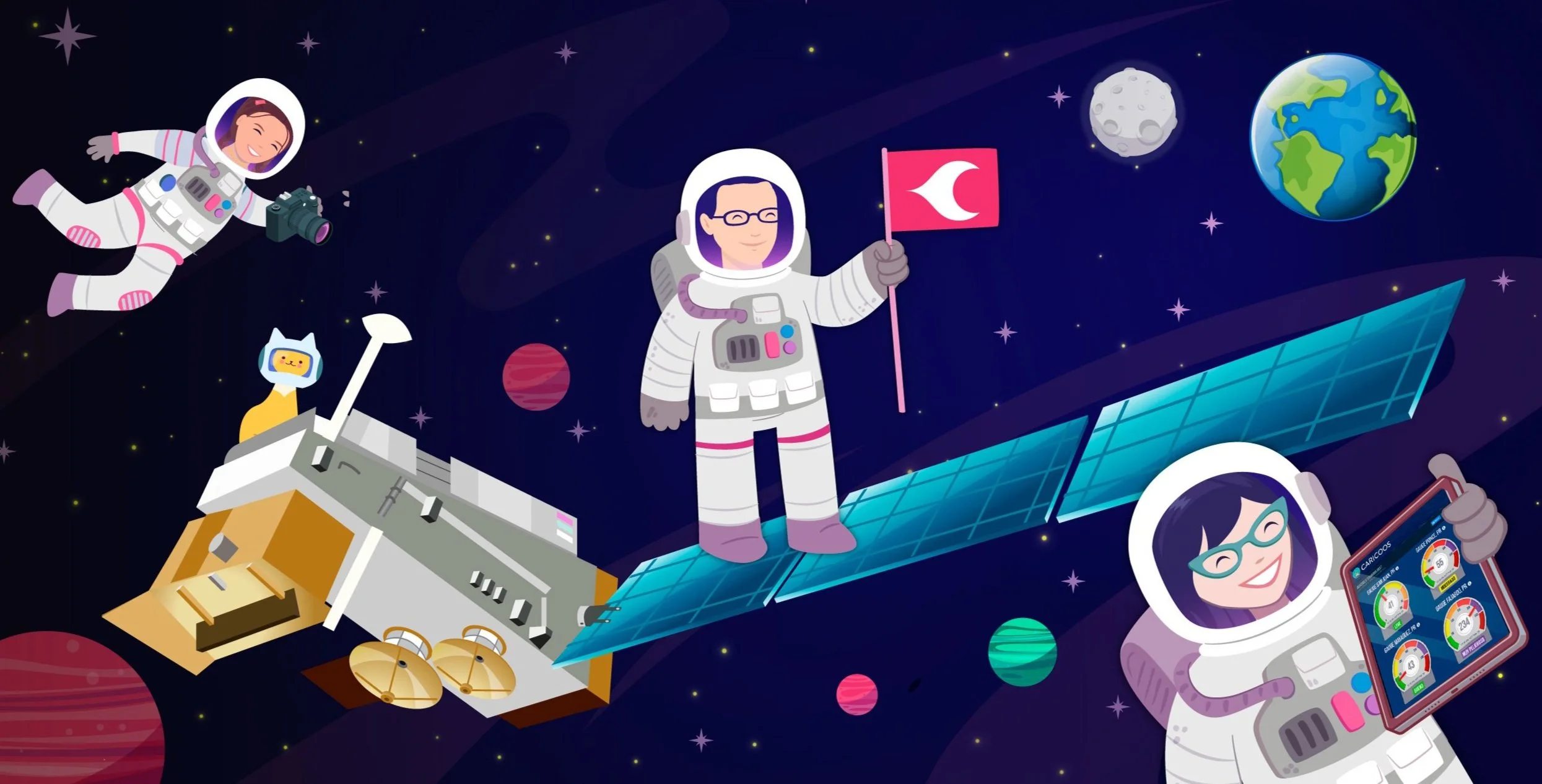Aerosols Monitoring Tool
We are excited to share this video that NASA made about the Aerosol Monitoring Tool and its’ important role in keeping Puerto Rico's population safer. It has been such an exceptional learning experience for us at Candela Creative Group™, to be the development agency for the Aerosol Monitoring Tool and to help carry out this amazing initiative working in the Early Warning of Saharan Dust Events to Improve Health and Well-Being in the Caribbean Region, funded by NASA - National Aeronautics and Space Administration and the Department of Health of Puerto Rico.
What are aerosols?
Small solid and liquid particles suspended in the atmosphere are called aerosols. Examples of aerosols include windblown dust, sea salts, volcanic ash, smoke from fires, and pollution from industries. These particles are important to scientists because they could affect the climate and the health of people by breathing pollutant particles.
What is Saharan dust?
The mineral dust particles that reach us in the Americas from the Sahara / Sahel desert could contain minerals, organic matter, sea salts, viruses and bacteria. The most intense seasons in Puerto Rico occur between the months of June to August.
How does it affect health?
Scientific evidence suggests that high exposure to these sprays can cause asthma, cardiovascular events, and other serious health problems. However, scientists do not fully understand the direct and indirect impact of aerosols on the environment and human health (Source: NASA Earth Observations).
How does the application work?
To avoid or minimize the impact of aerosols on human health, this experimental support and monitoring tool of aerosols and Saharan dust uses data from various NASA satellites, notably GOES and VIIRS, the tool shows different images and animations of how aerosols move across the Atlantic. The satellites will also be used to show, in near - real time, the value of the density of aerosols in four areas of Puerto Rico: San Juan, Ponce, Mayaguez and Fajardo.
We are honored to have worked with Pablo Mendez-Lazaro, Caricoos, University of Puerto Rico Medical Sciences Campus, University of South Florida, Universidad de Puerto Rico, National Weather Service, Centro Comprensivo de Cáncer de la Universidad de Puerto Rico/UPR Comprehensive Cancer Center, EcoExploratorio, Edgar Pérez-Matías, MS, DrPHc, Patricia Chardon-Maldonado, among other scientists, organizations and all of the partners that have helped complete it successfully.






